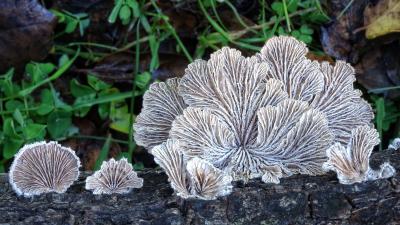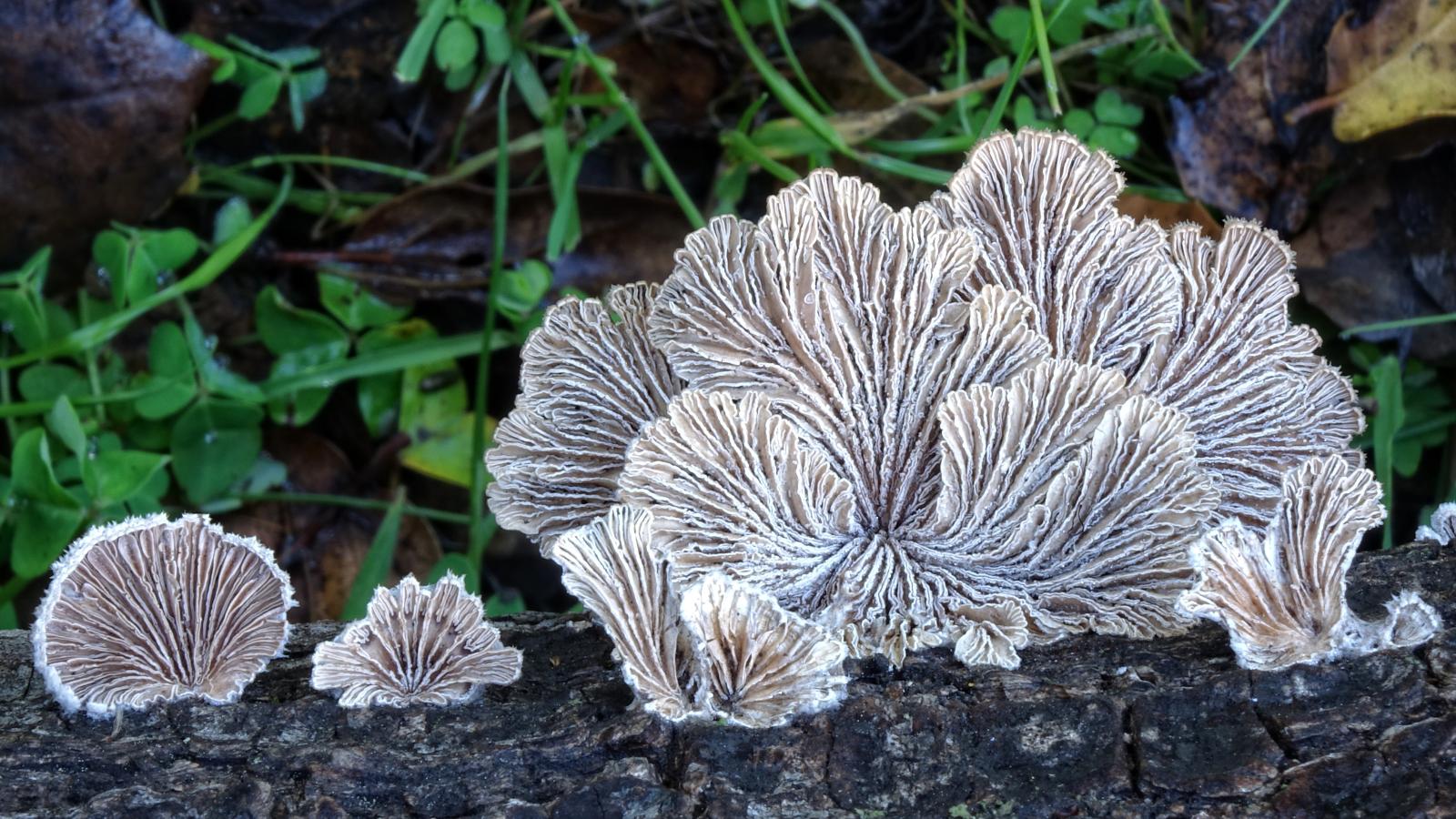This is the split gill mushroom (Schizopyllum commune). It is one of the most common wood-decaying mushrooms worldwide — it can be found on every continent except Antarctica. This small, greyish-white mushroom can be identified by its unique gills which appear to be split lengthwise. This is where the mushroom gets its name. These unique gills are adapted to withstand droughts, which makes it well-adapted for life in the Bay Area. When conditions are moist, the slits open and allow spores to fall to the ground, but during dry periods, the gills curve inward, which protects the spore-producing surfaces. This feature is not found in any other genus of mushroom.
The split gill is so successful worldwide because it is not just a decomposer, it is a parasitic decomposer. It colonizes trees while they are still alive, which allows them to have a competitive advantage over other fungus species that colonize a tree only after it has died.
The split gill is also one of the only mushroom-producing fungi that can parasitize humans! These infections are vanishingly rare, so don’t be alarmed if you see split gills out on the trail. In fact, split gills are used as medicine, and sometimes food, in many cultures worldwide. (As always, please remember that collecting mushrooms on Midpen lands is strictly prohibited).


